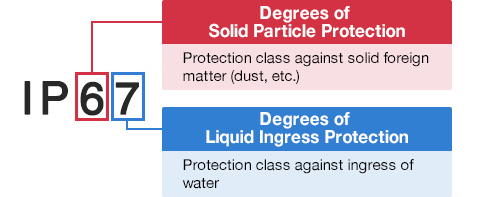Descriptions
・Relays Iridium® and GNSS signals, and provides a solution for satellite communications indoors and mobile applications
・Indoor coverage: Maximum 5 m
・RF gain level can be adjusted on the front panel (40 to 50 dB)
・Compact design offers flexible installation: 265 × 55 × 170 (W × H × D, mm), 10.4 × 2.2 × 6.7 (W × H × D, inch)
・Not only satellite PTT (IC-SAT100), but also Iridium® satellite phones and SBD (Short Burst Data) service can be used
・Use supplied coaxial cables (5 m, 16.4 ft for indoor and 10 m, 32.8 ft for outdoor) or user supplied coaxial cables*1
*1 Outdoor cable: 5 dB or less attenuation. Indoor cable: 3 dB or less attenuation.
Specifications
General
| Frequency range | 1616.02–1626.48 MHz (Uplink/Downlink) 1575.42–1605.40 MHz (Downlink, GNSS L1 Band) |
|---|---|
| Antenna impedance | 50 Ω (N-J connector) |
| Operating temperature range | –30°C to +60°C, –22°F to +140°F |
| Power supply requirement | 13.2/26.4 V DC nominal (10–32 V DC Operating Voltage) |
| Current drain (approximate) | Less than 8.0 A (at relay) Less than 2.5 A (stand-by) |
| Dimensions (W×H×D) (Projections not included) |
265 × 55 × 170 mm, |
| Weight (approximate) | 2.6 kg, 5.7 lb |
Uplink
| Total gain | 40–50 dB (1 dB step adjustable) Gain 40 dB at 0 dBm Input Gain 50 dB at –10 dBm Input |
|---|---|
| Rated output power | +40 dBm |
| EVM | Less than 7% |
| Spurious emissions | Less than –13.0 dBm |
Downlink
| Total gain | 40–50 dB (1 dB step adjustable) at -80 dBm Input |
|---|---|
| Noise figure | Less than 3.0 dBm |
| Spurious emissions | Less than –13.0 dBm |
All stated specifications are subject to change without notice or obligation.
Supplied Accessories
- OPC-2430, 5 m, 16.4 ft coaxial cables for indoor, 2 pieces
- OPC-2431, 10 m, 32.8 ft coaxial cables for outdoor, 2 pieces
- AH-38, satellite antennas, 4 pieces
- OPC-2426, DC power cable, 1 piece
Optional Accessory
Satellite PTT
Catalogs / Brochures
| Brochures Name | Size |
|---|---|
| RP-SAT1 | 1.53MB |
Instruction Manual / Guides
| Name | Model Name | Note |
|---|---|---|
| INSTRUCTIONS | RP-SAT1 |
Ingress Protection (IP) Code
Ingress Protection (IP) ratings define the level of protection provided by enclosures to prevent the ingress of foreign objects (dust) and liquid into the electrical equipment.
International Standard IEC 60529 outlines an international classification system that describes the sealing characteristics of electrical equipment.
The classification system uses the “IP” code, or “Ingress Protection” code, to define the level of seal.
An IP number contains two numbers (i.e. IP67) in most instances which relate to the level of protection provided by an enclosure or housing.
Either number may be shown as “X” (i.e. IPX6 / IP7X) to indicate the “X” part is not tested.


Degrees of Solid Particle Protection – 1st Digit
| IP6x | No ingress of dust; complete protection against contact. (Dust tight) |
|---|---|
| IP5x | Protected from the amount of dust that would interfere with normal operation. (Dust protected) |
Degrees of Liquid Ingress Protection – 2nd Digit
| IPx8 | Protected against continuous immersion in water. Depth and duration specified by model. |
|---|---|
| IPx7 | Protected against temporary immersion in water for 1 m (3.3 ft) for 30 minutes |
| IPx6 | Protected against water projected by powerful jets from any direction. 100 L per minute by a powerful jets (12.5 mm) for 3 minutes. |
| IPx5 | Protected against water projected by jets from any direction. 12.5 L per minute by a nozzle (6.3 mm) for 3 minutes. |
| IPx4 | Protected against water splashed against the equipment from any direction |







